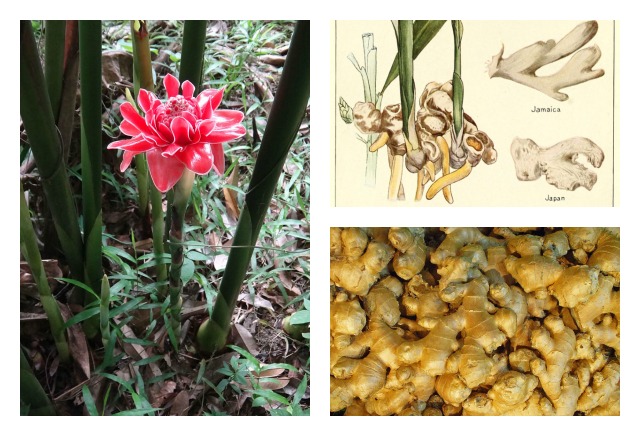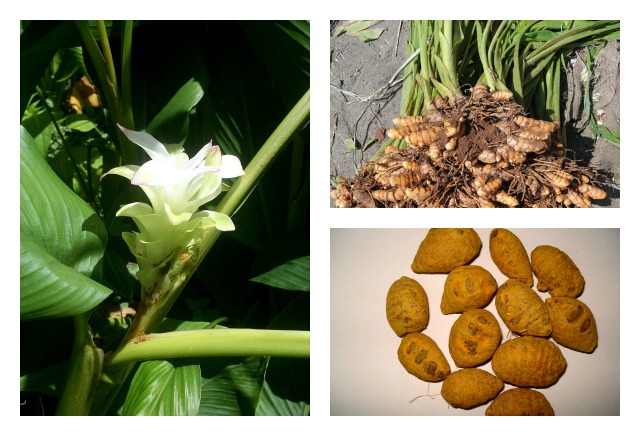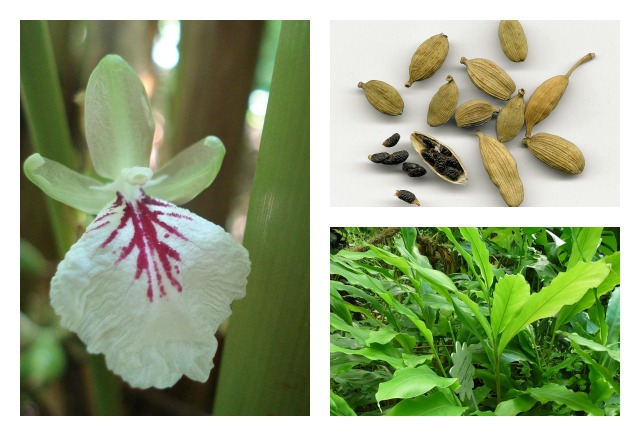Zingiberaceae are flowering perennial herbs that belong to the ginger family of about 1,000 species. The roots, or rhizomes, run along the ground horizontally, even in the air, similar to orchids. The zingiberaceae flowers even resemble orchids. Some species are used to make perfumes and some species of this plant provide us with spices. Depending on the species, the rhizomes, bulbs, or seeds are used.
The rhizome of the zingiberaceae speicies, Curcuma longa, is dried to make the spice turmeric.
Cardamom seeds come from the species Elettaria cardamomum.
Ginger root is the bulbous root of the species Zingiber officials.
The health benefits of zingiberaceae include these three herbs:
Ginger
Fresh ginger root is often grated and used in Asian cooking, or juiced with fruits and vegetables to add flavor and spice. However, ginger has a history of health benefits as well. For years, people have taken ginger-ale for an upset stomach or to improve digestion. It’s also effective for motion sickness, nausea, arthritis and headaches. In a study quoted in the “Healing Power of Herbs,” researchers found that ginger was more effective than over-the-counter motion sickness medication. However, it took almost four hours after taking the ginger to have any effect in reducing cold-sweating and vomiting when compared to controls. Powdered ginger root in the amount of 1 gram was most likely to have an effect. I think I would prefer a little fast acting anti-emetic such as Dramamine. But you might try ginger for the long haul — maybe take both of them.
Another recent research study has found that ginger extract has anticancer activity in the management of prostate cancer.
Turmeric
Turmeric rhizomes are dried and ground into a powder to produce the bright yellow-orange spice called turmeric. It’s used in many Indian dishes to impart a distinctive color and flavor. But it also has medicinal properties, treating inflammatory conditions such as rheumatoid arthritis. In Ayurveda, the ancient medical practice of India, turmeric is a symbol of protection and purity — it is used as an aromatic, stimulant, and a drug to reduce gas. It’s used in India to treat anorexia, liver problems, cough, rheumatism, wound healing and sinusitis.
Clinical trials have found that a formula of turmeric, ashwagandha and boswellia reduced the pain of arthritis, according to Dr. Michael E. Weiner in his book, “Herbs that Heal.”
The main phytochemical in turmeric is the powerful antioxidant, curcumin. Research shows that curcumin provides anti-cancerous, anti-inflammatory, and anti-microbial health effects.
Cardamom
In Ayurveda, cardamom is called “ela” and is used to improve digestion, relieve stomach cramps and reduce gas. It is a warming herb that balances your three doshas: the vata, pitta and kappa. Cardamom is good for circulation and strengthening your lungs.
Cardamom has also been effective in a chewing gum for nicotine addiction. And it is showing some success against dental cavities because of its anti-microbial actitivity. I don’t know where you can buy gum with cardamom, but maybe you can chew on the seeds or make a mouthwash with cardamom extract.
According to the 2011 “British Journal of Nutrition,” cardamom may be effective in preventing non melanoma skin cancer.
The seeds are used whole or ground to a powder in baked goods. I like to add 1/2 teaspoon of ground cardamom to my pancake batter. My neighbor makes these yummy swedish sweet rolls with caradmom — it’s really a very pleasant spice.
Further Reading:
Britannica: Zingiberaceae [http://www.britannica.com/EBchecked/topic/657390/Zingiberaceae]
The Healing Power of Herbs; Michael T. Murray, N.D.
Herbs That Heal; Michael A. Weiner, P.h.D.
Britannica: Turmeric [http://www.britannica.com/EBchecked/topic/610223/turmeric]
BBC: Food Ingredients Cardamom Recipes [http://www.bbc.co.uk/food/cardamom]




